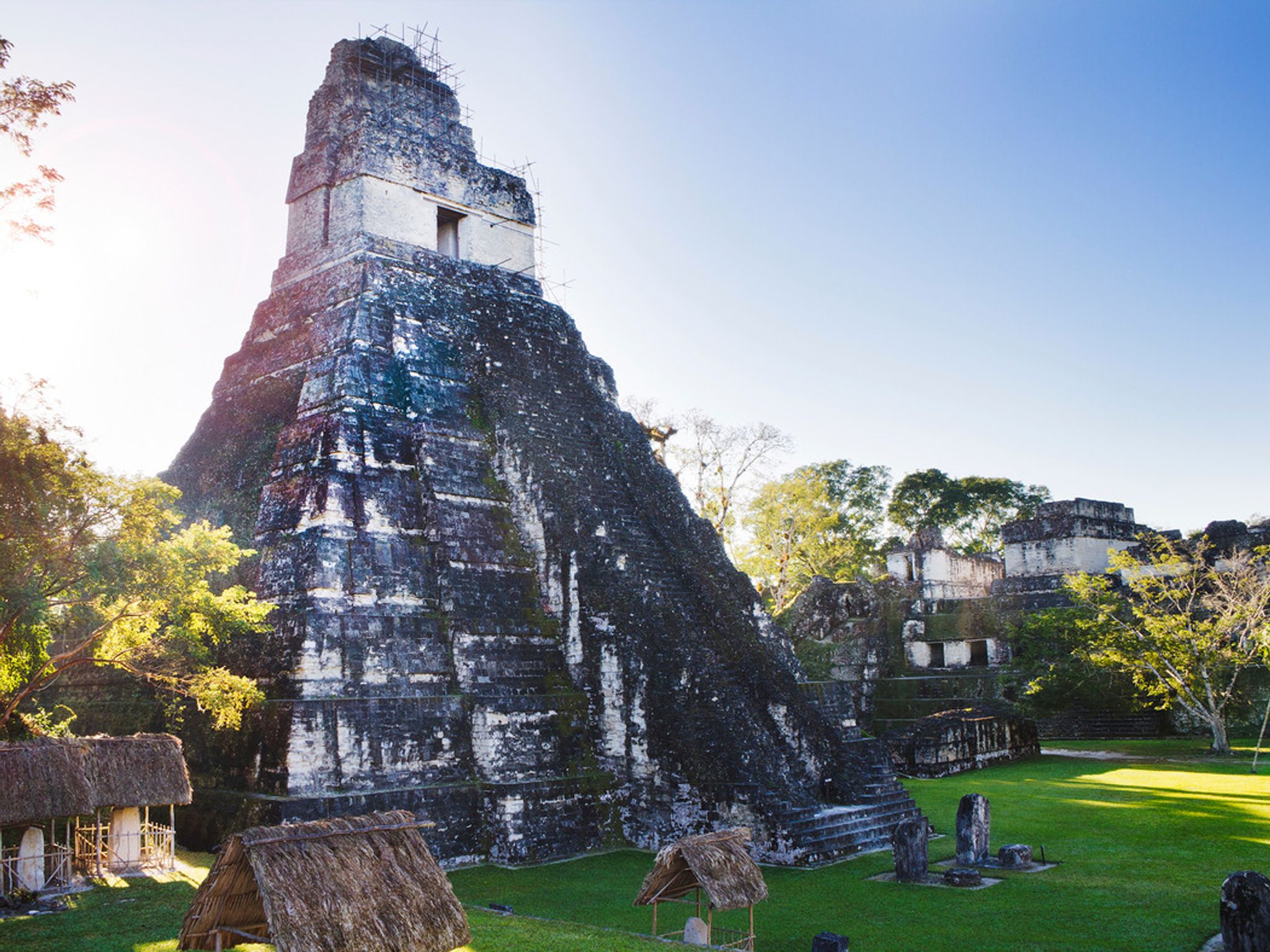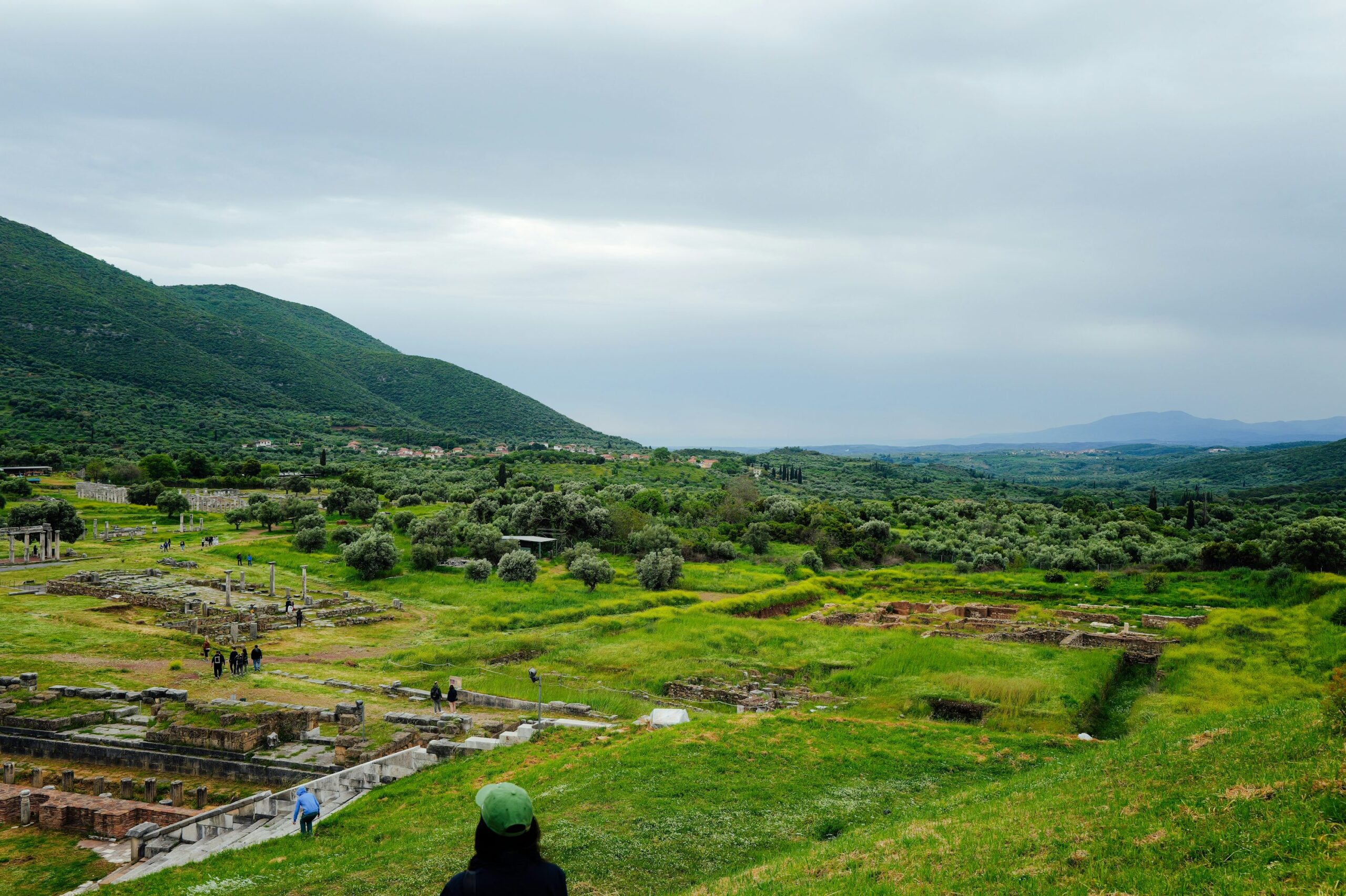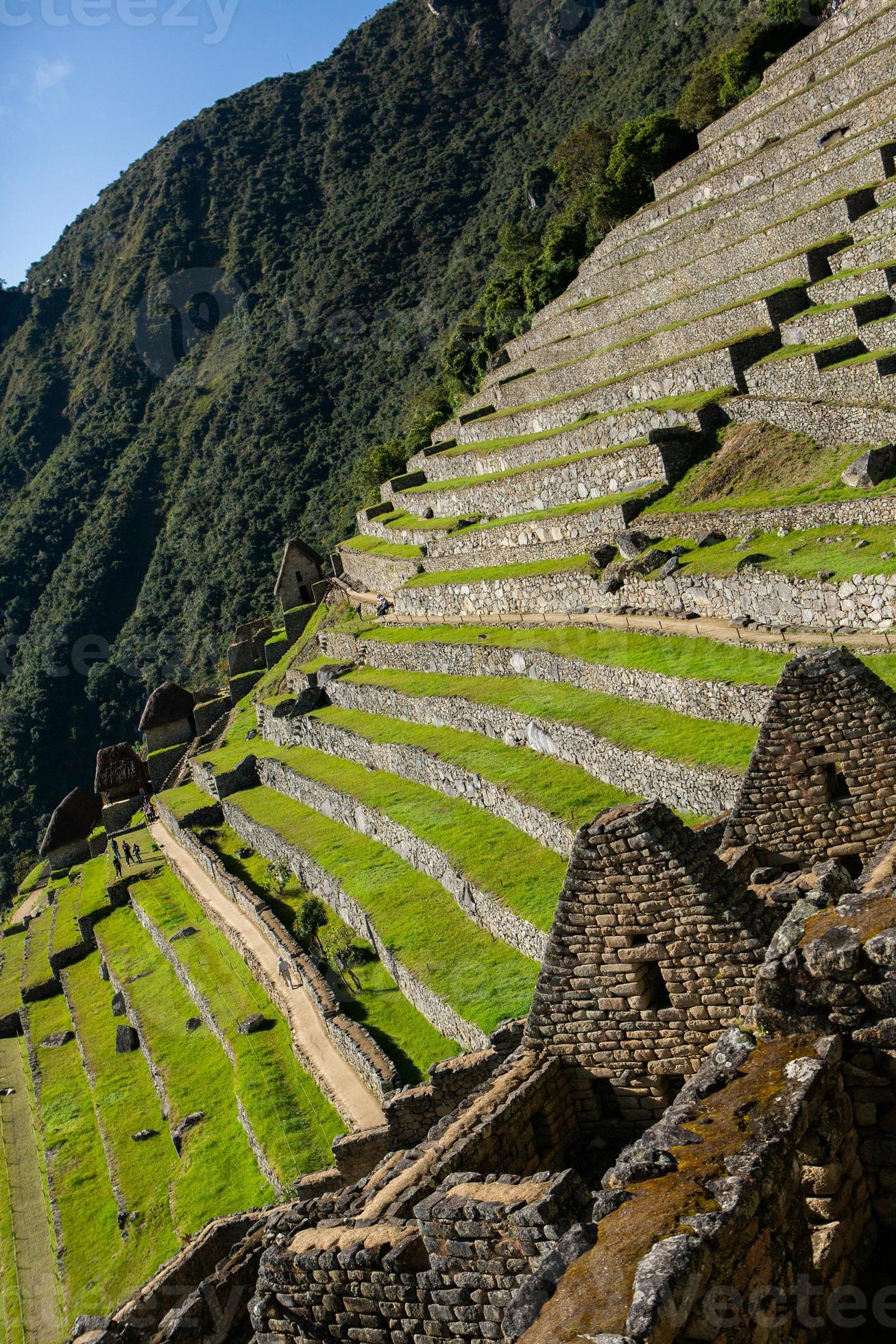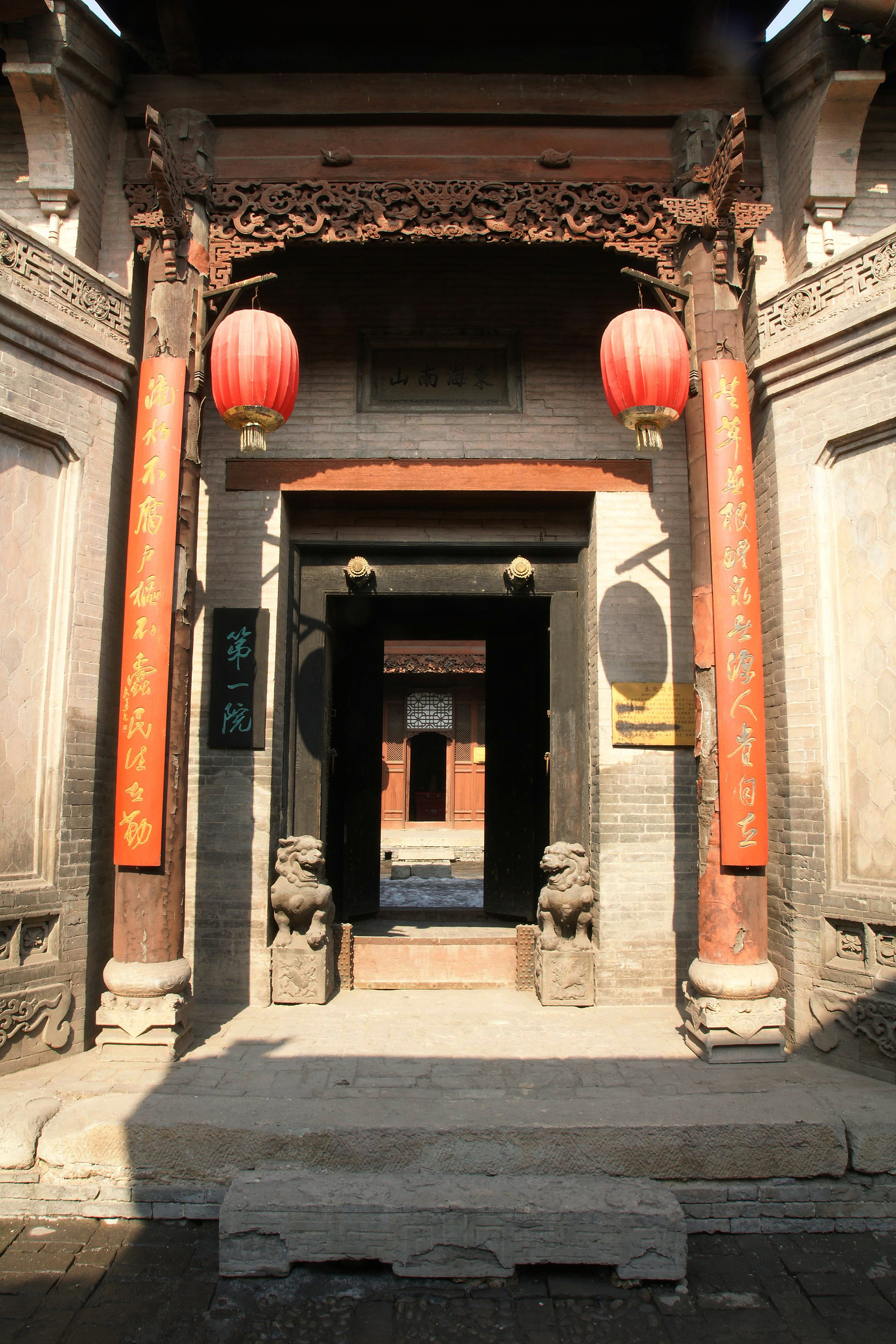Exploring Dingcun Ruins: A Journey Through China’s Archaeological Heritage

An Essential Guide to Visiting Dingcun Ruins
In This Guide
- An Essential Guide to Visiting Dingcun Ruins
- The Rich History and Legends of Dingcun Ruins
- Main Highlights: What You Absolutely Can’t Miss
- Planning Your Visit: A Practical Guide
- Tickets: Prices, Booking, and Tips
- How to Get There: A Complete Transportation Guide
- Local Cuisine and Accommodation Nearby
- Frequently Asked Questions
- Final Thoughts on Your Trip
The Dingcun Ruins, located in the picturesque Yi County of Anhui province, are a hidden gem for those captivated by China’s rich tapestry of history and culture. This archaeological site, dating back to the Neolithic period, offers an extraordinary glimpse into the lives of ancient communities that once thrived in this region. Unearthed in 1972, the ruins reveal a wealth of artifacts and structures that provide valuable insights into early Chinese civilization, including pottery, tools, and even remnants of ancient dwellings.
Visiting the Dingcun Ruins is not merely an educational excursion; it’s a journey through time. As you stroll through the remnants of this ancient settlement, you’ll find yourself enveloped by the serene beauty of the surrounding landscape, which is dotted with rolling hills and lush greenery. This tranquil environment contrasts sharply with the vibrant history encapsulated within the ruins, making it a perfect destination for both history enthusiasts and those seeking a peaceful escape.
Why Visit Dingcun Ruins?
-
Historical Significance: As one of the earliest known sites of human activity in eastern China, the Dingcun Ruins are pivotal for understanding the development of agriculture and settlement patterns in ancient China.
-
Unique Artifacts: The site showcases a variety of artifacts, including beautifully crafted pottery and tools, which highlight the ingenuity and craftsmanship of early Chinese inhabitants.
-
Scenic Beauty: Nestled amidst stunning landscapes, the ruins provide an ideal backdrop for photography and reflection, allowing visitors to immerse themselves in both nature and history.
-
Cultural Insights: Engage with local guides who can offer fascinating narratives about the significance of the ruins and the lifestyle of the people who once inhabited this area.

Dingcun Ruins.
Whether you are a seasoned traveler or a casual sightseer, the Dingcun Ruins promise a unique experience that blends education with tranquility. Prepare to explore one of China’s most significant archaeological treasures and uncover the ancient stories etched into its very foundation.
The Rich History and Legends of Dingcun Ruins
The Dingcun Ruins, located in Yi County of Anhui province, are a testament to the rich tapestry of Chinese history, culture, and architectural ingenuity. These ancient remnants offer a glimpse into the lives of the people who once inhabited this region, and they are steeped in fascinating legends that have been passed down through generations.

Dingcun Ruins.
A Glimpse into the Past
Dating back over 2,500 years, the Dingcun Ruins are believed to be the remnants of a significant settlement during the Eastern Zhou Dynasty. The site showcases a variety of architectural styles and urban planning techniques that were advanced for their time. Archaeological excavations have revealed a network of residential buildings, ceremonial spaces, and even remnants of ancient agricultural practices, providing invaluable insights into the socio-economic structure of early Chinese civilization.
The ruins are often regarded as a vital link to understanding the evolution of Chinese architecture, particularly the development of the Hui-style, characterized by its whitewashed walls and black-tiled roofs. This style is a hallmark of the region and has influenced countless villages across Anhui province.
Legends and Lore
The Dingcun Ruins are not only significant for their historical value but also for the myths and legends that surround them. One of the most popular legends speaks of a benevolent deity who protected the villagers from floods and natural disasters. According to local lore, this deity resided in a temple built on the highest point of the ruins, where villagers would come to offer prayers and sacrifices, particularly during the harvest season.

Dingcun Ruins.
Another enchanting tale tells of a romantic tragedy between a young couple from rival families. Their love defied the social norms of their time, leading to a series of misfortunes that ultimately resulted in their untimely deaths. The story has transcended generations, often recounted by local storytellers who emphasize the themes of love, sacrifice, and the eternal bond between the lovers, said to linger in the whispers of the wind that sweeps through the ruins.
Cultural Significance
Today, the Dingcun Ruins serve as an essential cultural heritage site, drawing both domestic and international travelers eager to explore the depths of Chinese history. The site is not only an archaeological wonder but also a cultural hub where traditional festivals are celebrated. Events such as the Qingming Festival, where families pay homage to their ancestors, are still observed, offering visitors a chance to witness the living traditions that have persisted through centuries.

Dingcun Ruins.
Visiting the Ruins
As you wander through the remnants of the Dingcun Ruins, you’ll be walking through history itself. The serene landscapes, combined with the echoes of ancient stories, create an atmosphere that is both reflective and inspiring. Visitors can engage with local guides who offer deeper insights into the archaeological findings and the legends that breathe life into these stones.
In summary, the Dingcun Ruins are more than just remnants of an ancient civilization; they are a living narrative of the people, their beliefs, and their enduring spirit. For travelers with a passion for history and culture, a visit to this site is not merely an exploration of the past, but an opportunity to connect with the timeless legends that continue to shape the identity of this remarkable region.
Main Highlights: What You Absolutely Can’t Miss
Discovering the Enchantment of Dingcun Ruins
When you venture to the Dingcun Ruins (丁村遗址) in Yi County, Anhui Province, you step into a captivating tapestry of ancient Chinese history and culture. This UNESCO World Heritage site is more than just a collection of structures; it’s a portal to the past that reveals the intricate lifestyle of the Hui people. Here are the key highlights that you absolutely cannot miss during your visit.

Dingcun Ruins.
1. The Architectural Marvels
At the heart of Dingcun are its stunning Hui-style buildings, which showcase the unique architectural style of the region. Be sure to explore:
– Courtyard Houses: These traditional homes, characterized by their intricate wooden carvings and whitewashed walls, offer a glimpse into the living conditions of ancient villagers.
– Ancient Temples: Visit the local temples adorned with beautiful murals and statues, which reflect the spiritual life and beliefs of the community.
2. Scenic Landscapes
Dingcun is enveloped by breathtaking natural beauty. The surrounding countryside features lush greenery and rolling hills, making it a perfect backdrop for photography. Don’t forget to:
– Take a Stroll by the Waterways: The picturesque ponds and streams that weave through the village are not only serene but also provide a unique perspective of the architectural landscape.
– Capture the Sunrise/Sunset: The play of light over the ancient structures during dawn and dusk creates a magical atmosphere perfect for unforgettable photographs.
3. Cultural Immersion
Engage with the rich cultural tapestry that Dingcun offers:
– Local Workshops: Seek out traditional artisans who practice time-honored crafts such as pottery, calligraphy, and silk weaving. Participate in workshops to create your own souvenirs.
– Festivals and Events: If your visit coincides with local festivals, immerse yourself in the vibrant celebrations that showcase traditional music, dance, and cuisine.

Dingcun Ruins.
4. Historical Insights
To deepen your understanding of Dingcun’s historical significance, consider hiring a local guide who can share fascinating anecdotes and insights about:
– Ancient Family Clans: Learn about the clans that inhabited the area and the legacies they left behind, including family genealogies and cultural practices.
– Historical Events: Discover how Dingcun played a role in significant historical events and the influences that shaped its development over centuries.
5. Culinary Delights
No visit to Dingcun is complete without savoring the local cuisine:
– Taste Hui Cuisine: Sample signature dishes such as stewed turtle and braised pork, renowned for their rich flavors and fresh ingredients sourced from the surrounding area.
– Enjoy Tea Tasting: Experience the local tea culture by participating in a traditional tea ceremony, where you can learn about the various tea types and their health benefits.

Dingcun Ruins.
6. Shop for Local Handicrafts
Before leaving, take a moment to explore the local markets where you can find:
– Handmade Pottery: Crafted by local artisans, these pieces often reflect the traditional designs of the region.
– Silk Products: From scarves to clothing, Anhui is known for its high-quality silk, making it a perfect souvenir to take home.
Final Thoughts
Dingcun Ruins offers a unique blend of history, culture, and natural beauty that promises to leave a lasting impression on any traveler. By exploring its architectural wonders, immersing yourself in local traditions, and savoring the culinary delights, you’ll gain a profound appreciation for this enchanting village and the rich heritage it embodies.

Dingcun Ruins.
Planning Your Visit: A Practical Guide
Visiting Dingcun Ruins: A Practical Guide
Dingcun Ruins (丁村遗址) offers a captivating glimpse into China’s rich historical tapestry, nestled in the picturesque landscape of Yi County, Anhui Province. As an international traveler keen on history and culture, planning your visit to this archaeological site requires some thoughtful preparation. Here’s everything you need to know to make the most of your experience.
Getting There
Location:
Dingcun Ruins is located in the northwest corner of Yi County, approximately 12 kilometers from the famous Hongcun Ancient Village, making it an easy addition to your itinerary.

Dingcun Ruins.
Transportation Options:
– By Train: The nearest major city is Huangshan, which is well connected by high-speed rail. From Huangshan, you can take a bus or taxi directly to Yi County.
– By Car: Renting a vehicle is a convenient option, allowing you to explore the surrounding countryside at your own pace.
– Guided Tours: Many travelers opt for guided tours that include transportation, providing insights into the area’s history and significance.
Best Time to Visit
- Spring (March to May): This is arguably the best time to visit, as the weather is mild and the landscape is lush and vibrant.
- Autumn (September to November): The fall foliage adds a beautiful backdrop to the ruins, making for stunning photographs.
- Avoid Peak Times: If possible, visit on weekdays to avoid the larger crowds that often gather on weekends and holidays.
Entrance Fees and Hours
- Entrance Fee: Make sure to check if there’s an entrance fee applicable to the Dingcun Ruins. As is common in many historical sites across China, fees may vary by season and visitor type.
- Operating Hours: Typically, the site is open year-round, but it’s advisable to confirm current hours before your visit.

Dingcun Ruins.
Exploring the Ruins
- Guided Tours: Consider hiring a local guide. They can provide invaluable context and stories that enhance your understanding of the ruins. Many guides also offer tours in English.
- Self-Guided Exploration: If you prefer to explore independently, be prepared with a map or a good navigation app. The ruins can be extensive, and having a plan will help you make the most of your visit.
Cultural Etiquette
- Respect the Site: As with any historical site, it’s important to be respectful. Avoid touching artifacts, and follow any posted regulations.
- Photography: While taking photos is often encouraged, be mindful of any restrictions, especially in areas that are considered sacred or sensitive.

Dingcun Ruins.
Nearby Attractions
- Hongcun Ancient Village: Just a short drive away, this UNESCO World Heritage site is famous for its well-preserved Hui-style architecture and beautiful scenery.
- Mount Huangshan: Known as the Yellow Mountains, this stunning range is a must-visit for its breathtaking views and hiking opportunities.
- Local Cuisine: Don’t miss the chance to sample local Anhui dishes. Look for restaurants or street vendors serving specialties like stinky tofu or bamboo shoot soup.
Tips for a Successful Visit
- Dress Comfortably: Wear comfortable shoes suitable for walking, as you’ll likely be exploring uneven surfaces.
- Stay Hydrated: Bring water, especially if you’re visiting during the warmer months.
- Plan Your Visit: Allocate enough time to fully explore the ruins and enjoy the surrounding natural beauty.

Dingcun Ruins.
By following this guide, you’ll not only enhance your visit to Dingcun Ruins but also gain a deeper appreciation for the intricate history and culture that define this remarkable region of China. Whether you are a history enthusiast or just looking for a picturesque getaway, Dingcun Ruins promises an unforgettable experience. Safe travels!
Tickets: Prices, Booking, and Tips
Unlocking the Secrets of Dingcun Ruins: Ticket Information, Booking, and Tips
Visiting the Dingcun Ruins (丁村遗址) is not just an exploration of ancient architecture; it’s a journey into the heart of Chinese history and culture. Here’s everything you need to know about securing your entry, planning your visit, and making the most of this fascinating site.
Ticket Prices
- Entrance Fee: Generally, the entrance fee is around ¥100 (approximately $15 USD). This fee grants you access to the ruins and surrounding areas, allowing you to appreciate the intricate architecture and learn about the site’s historical significance.
- Discounts: Reduced rates may be available for students, seniors, and children. Be sure to bring relevant identification to benefit from these discounts.
Booking Your Visit
- Advance Reservations: While it’s possible to purchase tickets on-site, especially during off-peak seasons, it’s advisable to book your tickets in advance during peak tourist seasons to avoid long queues and ensure availability.
- Online Booking: Tickets can often be purchased through various travel websites and platforms. Check local tourism sites or apps, as they may offer special promotions or package deals that include guided tours.
- Guided Tours: Consider joining a guided tour for a richer experience. Many tours include transportation, a knowledgeable guide, and sometimes additional attractions in the vicinity, such as nearby ancient villages or scenic spots.
Visiting Tips
- Best Time to Visit: Arrive early in the morning or later in the afternoon to avoid the crowds. The site typically gets busier after 8 AM, when the entrance fee is enforced. Early birds can enjoy the tranquil atmosphere and take stunning photographs without the influx of tourists.
- What to Bring: Comfortable walking shoes are a must, as you’ll be exploring uneven paths and ancient structures. Don’t forget your camera to capture the picturesque scenes and intricate details of the ruins!
- Local Guides: Hiring a local guide can enhance your experience significantly. They can provide insights into the history, architecture, and cultural significance of the ruins, bringing the site to life in ways that a self-guided visit may not.
- Respect Local Customs: As with any historical site, it’s important to be respectful of the culture and the people. Follow any posted guidelines, especially regarding photography restrictions and maintaining the integrity of the site.
Nearby Attractions
While at Dingcun Ruins, consider exploring nearby attractions such as the picturesque Hongcun Ancient Village or Tunxi Ancient Street, each adding layers to your understanding of the region’s rich heritage. Many guided tours combine these locations for a comprehensive experience.
By planning ahead and following these tips, you can ensure a fulfilling visit to the Dingcun Ruins, immersing yourself in the beauty and history of one of China’s cultural treasures. Enjoy your journey!
How to Get There: A Complete Transportation Guide
Navigating Your Way to the Dingcun Ruins
Embarking on a journey to the Dingcun Ruins (丁村遗址) is a rewarding experience that immerses you in the rich tapestry of Chinese history and culture. Located in Yi County, Anhui Province, this site is a treasure trove for history enthusiasts, offering a glimpse into ancient civilization. Here’s a comprehensive guide to help you reach this remarkable destination.
Getting to Yi County
By Air:
The nearest major airport is Huangshan Tunxi International Airport (TXN), situated approximately 60 kilometers from Yi County. This airport offers domestic flights from major cities, including Beijing, Shanghai, and Guangzhou.
Transportation from the Airport:
– Taxi: The most convenient option is to take a taxi directly to Yi County, which will take about 1 hour and cost around 200-300 CNY (30-45 USD).
– Airport Shuttle: Look for shuttle buses that connect to Huangshan city, followed by a local bus or taxi to Yi County.
By Train:
Yi County is accessible via train from various cities. The Huangshan North Railway Station serves high-speed rail connections, making it easy to reach from places like Shanghai and Nanjing.
Transportation from the Train Station:
– Taxi: A taxi ride from Huangshan North Railway Station to Yi County will typically cost around 100-150 CNY (15-22 USD) and take about 40 minutes.
– Local Bus: There are local buses available but may require transfers; therefore, a taxi is recommended for convenience.
By Bus:
Long-distance buses are also a viable option, with multiple departures from nearby cities such as Huangshan City and Tunxi. The bus ride can take anywhere from 1.5 to 3 hours, depending on traffic and distance.
Reaching the Dingcun Ruins
Once you arrive in Yi County, getting to the Dingcun Ruins is straightforward:
-
Taxi or Ride-Hailing Apps: The quickest way to reach the Dingcun Ruins is by taxi or using popular ride-hailing apps like Didi. The ruins are located about 15 kilometers from the Yi County center, and the fare will generally be around 30-50 CNY (4-8 USD).
-
Local Bus: For those on a budget, local buses may operate routes to Dingcun. However, be aware that these can be infrequent and may require some planning.
Tips for Your Journey
-
Plan Ahead: Since public transportation can be less frequent in rural areas, check schedules in advance. It’s advisable to have a few local phrases handy or a translation app, as English might not be widely spoken.
-
Timing is Key: If you aim to visit during weekends or holidays, be prepared for larger crowds. Early mornings or late afternoons are ideal for a quieter experience.
-
Entrance Fees: Note that the Dingcun Ruins may have an entrance fee. It’s wise to carry some cash, as not all places accept credit cards.
-
Local Guides: Consider hiring a local guide for a richer understanding of the site’s historical context. They can also assist with transportation logistics.
By following this guide, you’ll be well-prepared for an enriching visit to the Dingcun Ruins, where history awaits amidst the stunning landscapes of Anhui Province. Enjoy your travels!
Local Cuisine and Accommodation Nearby
Culinary Delights and Comfortable Stays near Dingcun Ruins
Exploring the Dingcun Ruins offers not just a glimpse into ancient Chinese civilization, but also a chance to savor the rich flavors of local cuisine and enjoy the unique accommodations that this captivating region has to offer.
Local Cuisine
The culinary landscape around Dingcun is a reflection of Anhui’s rich agricultural heritage, renowned for its fresh and flavorful ingredients. Here are some local dishes you shouldn’t miss:
-
Hui Cuisine (徽菜): This regional culinary style is characterized by its use of wild game, fresh river fish, and local herbs. Dishes are often slow-cooked to enhance flavors. Look for Braised Bamboo Shoots (红烧竹笋) and Steamed River Fish (清蒸河鱼), both staples of Hui cuisine.
-
Tofu Dishes: Anhui is famous for its silky tofu, often served in various ways. The Stir-Fried Tofu with Vegetables (素炒豆腐) is a must-try, showcasing the delicate texture of the tofu paired with seasonal vegetables.
-
Noodle Soups: Delight in a bowl of Beef Noodle Soup (牛肉面), a comforting dish featuring tender beef, rich broth, and homemade noodles. It’s perfect after a day of exploring the ruins.
-
Local Snacks: Don’t overlook the street food! Sample Jianbing (煎饼), a savory pancake filled with vegetables and egg, or Sticky Rice Dumplings (粽子), traditionally enjoyed during festivals.
Recommended Restaurants
For an authentic dining experience, consider these local restaurants:
-
Yi County Old Street Restaurant (义县老街餐馆): Renowned for its traditional Hui dishes, this eatery captures the essence of local flavors in a cozy setting.
-
Huangshan Teahouse (黄山茶馆): Enjoy a cup of the famous Huangshan tea with light snacks after a long day of exploration. The teahouse offers a serene ambiance, perfect for unwinding.
-
Grandma’s Kitchen (奶奶的厨房): This charming spot is famous for its homestyle cooking and warm service. The menu features a variety of local specialties, and their Sweet and Sour Pork (糖醋里脊) is a crowd-pleaser!
Accommodation
After indulging in the local flavors, retreat to one of the area’s charming accommodations. Here are some options that offer comfort and a taste of local culture:
-
Dingcun Guesthouse (丁村客栈): Situated close to the ruins, this guesthouse features traditional architecture and modern amenities. Guests can enjoy local breakfast options and personalized service.
-
Huangshan International Hotel (黄山国际大酒店): Offering stunning views of the surrounding mountains, this hotel combines comfort with convenience. It features spacious rooms and an on-site restaurant serving a mix of Anhui and international cuisine.
-
Ancient Village Homestay (古村民宿): For a more immersive experience, consider staying in a homestay within a nearby ancient village. You’ll enjoy the charm of traditional architecture while getting to know local families.
-
Mount Huangshan Resort (黄山度假酒店): If you’re looking to extend your trip, this resort offers luxurious accommodations with easy access to both Dingcun and the iconic Yellow Mountains.
Enjoy your journey through history and flavor at Dingcun Ruins, where every meal and every night spent is infused with the spirit of ancient China!
Frequently Asked Questions
Frequently Asked Questions about Dingcun Ruins (丁村遗址)
1. What are the Dingcun Ruins?
The Dingcun Ruins are an ancient archaeological site located in Yi County, Anhui Province, known for their historical significance and well-preserved remnants of structures from the Neolithic era, specifically the Majiabang culture. These ruins provide insight into early Chinese civilization, showcasing the lifestyle and architectural practices of ancient inhabitants.
2. How do I get to the Dingcun Ruins?
The Dingcun Ruins are situated in Yi County, which is accessible by public transport or private car from nearby cities like Huangshan or Tunxi. The closest major transportation hub is Huangshan North Railway Station. From there, local buses or taxis can take you directly to the site.
3. Is there an entrance fee?
Yes, there is an entrance fee to visit the Dingcun Ruins. It is advisable to check the latest fees online or at the site, as prices may vary depending on the season and any special exhibitions that may be taking place.
4. What are the best times to visit the Dingcun Ruins?
The ideal times to visit are during spring (April to June) and autumn (September to November) when the weather is mild, and the surrounding landscape is particularly beautiful. Early mornings and late afternoons are also recommended to avoid peak tourist crowds and to enjoy a quieter experience.
5. Are there guided tours available?
Yes, guided tours are available and highly recommended. Local guides can provide invaluable insights into the history and significance of the ruins, enhancing your understanding of the site. You can book these tours in advance through various travel agencies or at local tourism offices.
6. What should I wear and bring when visiting?
Comfortable walking shoes are essential, as the terrain may be uneven. Dress in layers to accommodate fluctuating temperatures, and consider bringing a hat and sunscreen during the warmer months. A camera is also a must to capture the stunning scenery and historical features.
7. Can I find amenities nearby?
While the Dingcun Ruins themselves are a historical site, there are local amenities such as small restaurants and shops within a short distance. However, it is advisable to bring water and snacks, especially if you plan to spend an extended time exploring the area.
8. Are there any cultural practices or etiquette I should be aware of?
When visiting the Dingcun Ruins, it’s important to show respect for the site. Avoid touching or climbing on ancient structures, and be mindful of noise levels. Photography is usually permitted, but always check for any signs indicating restrictions. Engaging with local guides and residents with courtesy will enhance your experience and appreciation of the site.
Final Thoughts on Your Trip
As your journey through the enchanting Dingcun Ruins comes to a close, it’s essential to reflect on the rich tapestry of history and culture you’ve experienced. This site, steeped in the legacy of ancient Chinese civilization, offers a rare glimpse into the past, where each stone and artifact tells a story of resilience and artistry.
Embrace the Experience
Key Takeaways:
-
Historical Significance: The Dingcun Ruins are not just remnants of the past; they are a testament to the ingenuity and craftsmanship of the people who once thrived here. Understanding the historical context adds depth to your visit.
-
Cultural Connections: Interact with local guides who can illuminate the intricacies of the site, providing insights that enrich your appreciation of Chinese heritage. Their narratives breathe life into the ruins, making your experience immersive.
-
Scenic Beauty: The picturesque surroundings enhance your exploration, with stunning views of the countryside and mountains providing a serene backdrop for contemplation and photography.
Reflect on Your Adventure
As you leave the Dingcun Ruins, take a moment to absorb the beauty and history that enveloped you. Whether you were captivated by the elegant Hui-style architecture or moved by the stories of those who walked these paths before you, the memories you’ve created will resonate long after your visit concludes.
In the grand narrative of your travels, the Dingcun Ruins stand as a chapter filled with discovery, reflection, and inspiration. May your journey through this remarkable part of China continue to inspire your future adventures, encouraging you to seek out the stories and landscapes that shape our world. Safe travels!